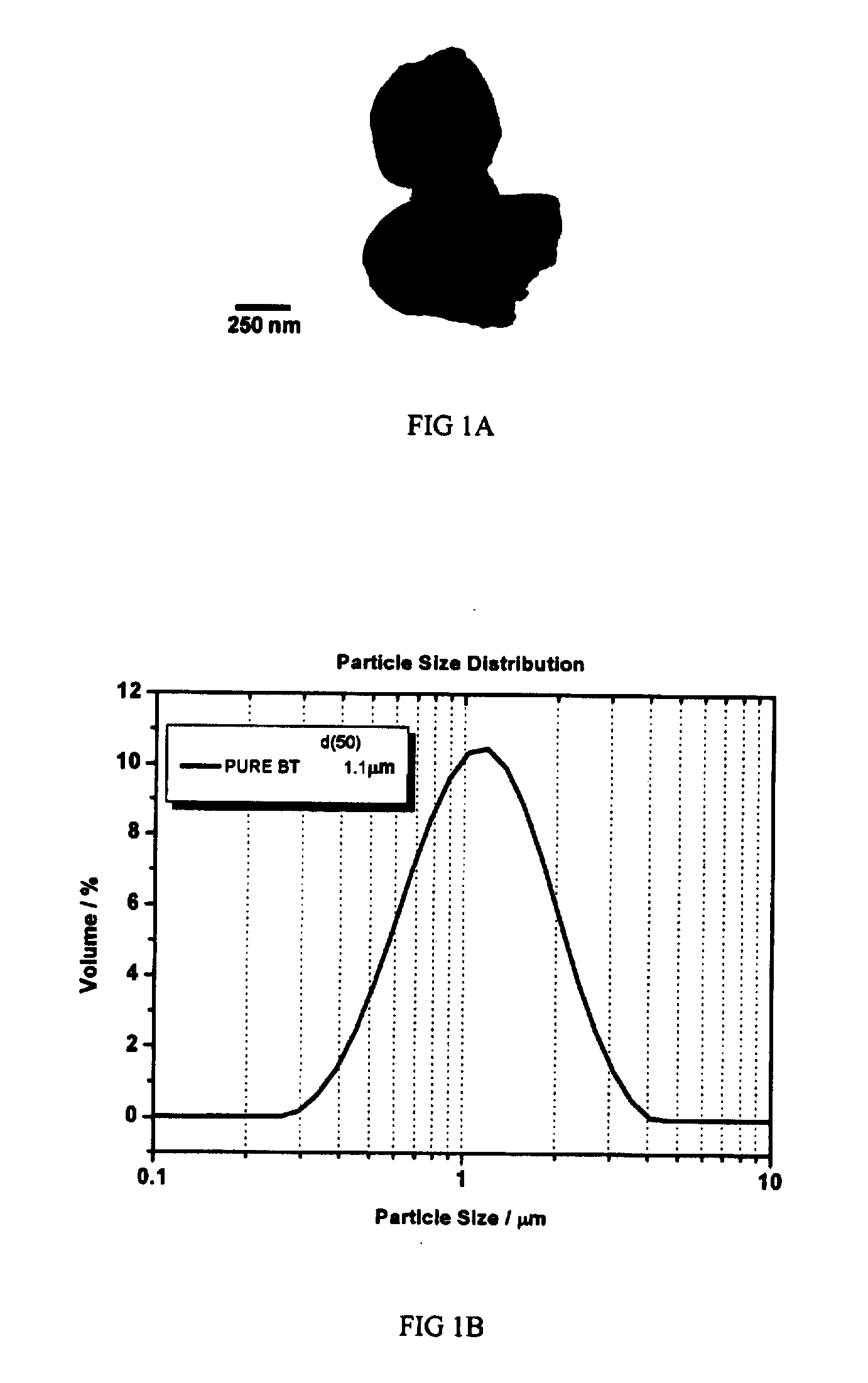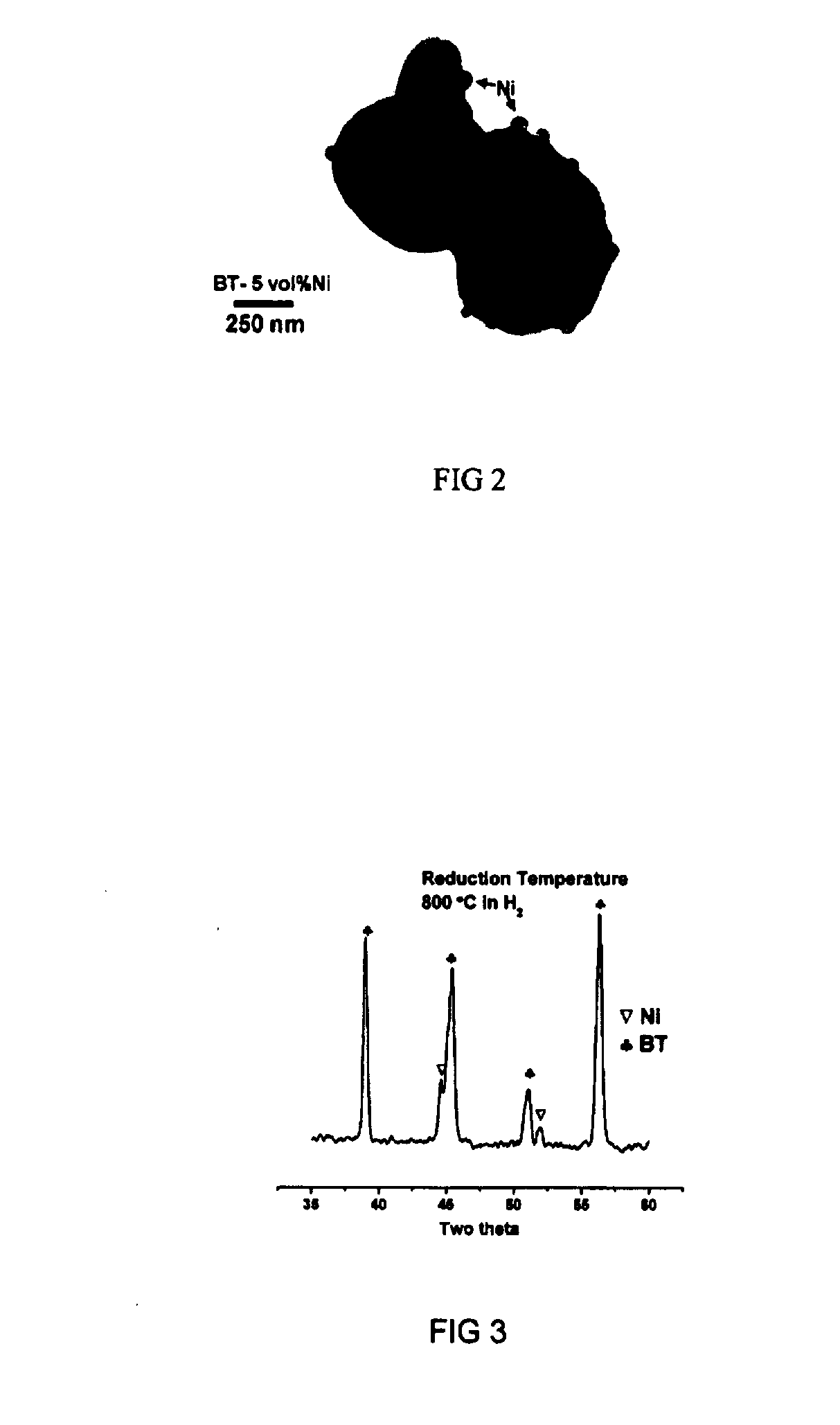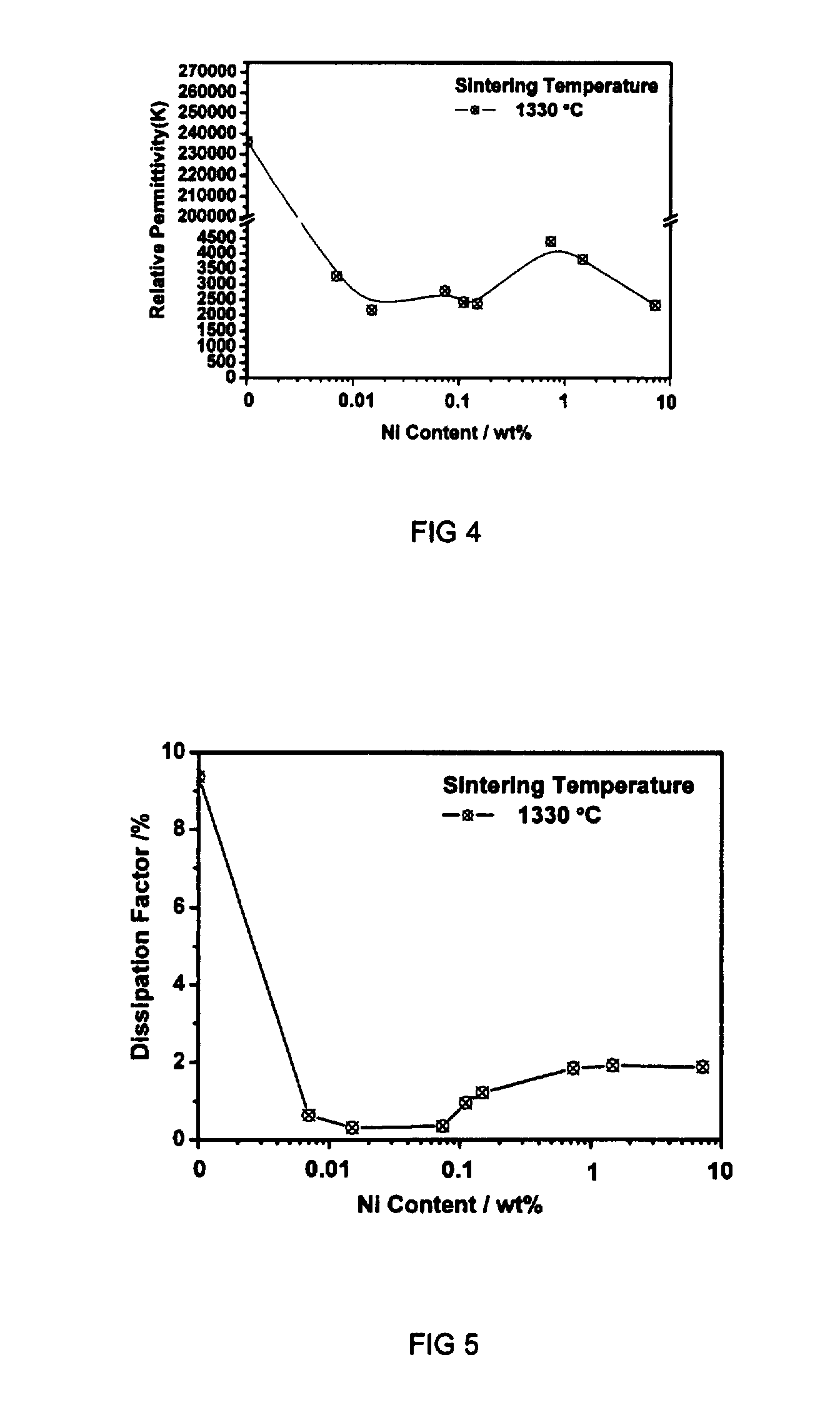Ceramic dielectrics for base-metal-electrode multilayered ceramic capacitors and the preparation thereof
a ceramic capacitor and ceramic dielectric technology, which is applied in the direction of fixed capacitors, stacked capacitors, fixed capacitor details, etc., can solve the problems of reducing the reliability of capacitors for long-term use, the cost of palladium is high and varied, and the material cannot be used as the dielectric for capacitors anymore, so as to achieve the effect of reducing the production cost of manufacturing the bme-mlcc of using the dielectric disclosed in the present invention
- Summary
- Abstract
- Description
- Claims
- Application Information
AI Technical Summary
Benefits of technology
Problems solved by technology
Method used
Image
Examples
example 1
[0041](a) A barium titanate powder (BaTiO3>99%, NEB, Ferro Co. USA, ˜1 micrometer) was milled in PE jar for 4 hours in a turbo mill. The grinding media were zirconia balls, the solvent was ethyl alcohol. The morphology of the barium titanate particles after milling is shown in FIG. 1A. The average particle size of the barium titanate particles is 1.1 micrometer, shown in FIG. 1B.
(b) The slurry was dried in a vacuum dryer. The dried lumps were furthered dried in an oven at 10° C. for 24 hours.
(c) The dried powder was crushed by mortar and pestle, and then sieved with a #150 sieve. The powder compact with the diameter of 10 mm was formed by uniaxial pressing at 20 MPa.
(d) Sintering was carried out at 1330 C for 2 hours in a box furnace in air. The heating and cooling rates were 3 C / min.
(e) After sintering the surface of the sintered discs were slightly ground with SiC sand papers. A silver paste (Ferro, Product No. TK33-008LV, Ferro Co., USA) was applied on the surface as the electrod...
example 2
[0043]The preparation steps for the BaTiO3 specimens shown in the present example are the same as those described in the Example 1, except that the specimens were sintered in a commercial nitrogen atmosphere. The oxygen partial pressure within the nitrogen was 10−4-5 atm as determined by a zirconia oxygen sensor, which located above the specimens during sintering. The sintering was performed at 1330 C for 2 hours. The electrical properties of the BaTiO3 specimens are: dielectric constant 23500, dielectric loss 9.4%, electrical resistivity 9×105 ohm-cm.
[0044]The electrical resistivity of the BaTiO3 specimens is rather low. It demonstrates that the BaTiO3 specimen sintered in the commercial nitrogen is no longer an electrical insulator. The BaTiO3 specimen can not be sintered in commercial nitrogen.
example 3
[0045]The preparation steps for the BaTiO3 specimens shown in the present example are the same as those described in the Example 1, except that the BaTiO3 specimens were sintered in a 90% N2 / 10% H2 atmosphere. The oxygen partial pressure within the atmosphere was as low as only 10−12-13 atm as determined by a zirconia oxygen sensor, which located above the specimens during sintering. The sintering was performed at 1330 C for 2 hours. The electrical properties of the BaTiO3 specimens are: dielectric constant 84680, dielectric loss 11.9%, and electrical resistivity 5×106 ohm-cm.
[0046]The electrical resistivity of the BaTiO3 specimens is also very low. It demonstrates that the BaTiO3 specimen sintered in the atmosphere of the oxygen partial pressure of 10−12-13 atm is no longer an electrical insulator. The BaTiO3 specimen can not be applied as ceramic capacitor as it is sintered in an atmosphere of low oxygen partial pressure.
PUM
| Property | Measurement | Unit |
|---|---|---|
| Partial pressure | aaaaa | aaaaa |
| Partial pressure | aaaaa | aaaaa |
| Fraction | aaaaa | aaaaa |
Abstract
Description
Claims
Application Information
 Login to View More
Login to View More - R&D
- Intellectual Property
- Life Sciences
- Materials
- Tech Scout
- Unparalleled Data Quality
- Higher Quality Content
- 60% Fewer Hallucinations
Browse by: Latest US Patents, China's latest patents, Technical Efficacy Thesaurus, Application Domain, Technology Topic, Popular Technical Reports.
© 2025 PatSnap. All rights reserved.Legal|Privacy policy|Modern Slavery Act Transparency Statement|Sitemap|About US| Contact US: help@patsnap.com



